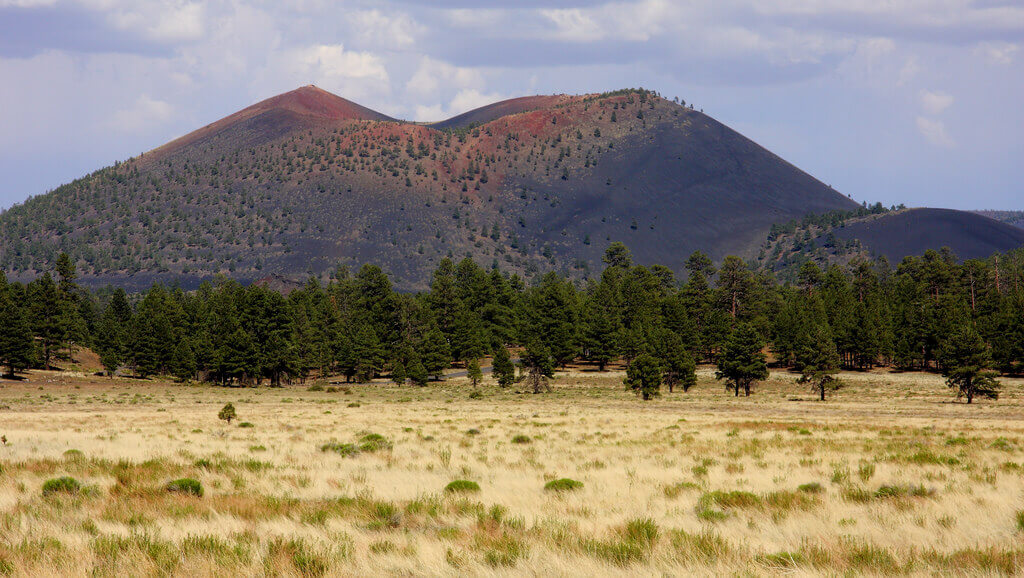Gillespie Volcano, located in Arlington, TX, is an intriguing geological feature that has captured the imagination of many locals and visitors alike. With its unique history and geologic significance, this place is a must-see destination for anyone interested in the natural world.
Read further as we’ll explore what you need to know about this land attraction, including its history, geology, and the impact it has had on the local community.
History – Local geologist Robert T. Hill discovered a volcano in the early 1900s, which is also called the Arlington Volcano and is estimated to have been active 95 million years ago when dinosaurs existed. It is a volcanic neck–the solid and remaining core of a volcano after the surrounding softer rock erodes away.
John Gillespie, the owner of the volcano, bought the land in the late 1800s and named it after himself. He discovered that the volcanic rock on his property had commercial value and was one of the first to recognize this. The rock was used for building purposes and was even employed to construct the University of Texas at Arlington campus nearby in the 1960s.
Geology – The volcano is a small volcanic neck that stands only 150 feet above the surrounding terrain. Made of basaltic rock, it has a dark color and contains high amounts of iron and magnesium. Basaltic rock is created from volcanic magma that cools rapidly, resulting in a hard and tough rock which can withstand erosion.
The volcano is a part of the Balcones Fault Zone, a system of volcanic rocks that spans across the Dallas-Fort Worth area. This zone was created during the Late Cretaceous period due to multiple faults and fractures. As a result, magma was able to rise from the Earth’s crust and shape volcanic attractions like this landmark.
Impact To The Local Community – The volcano has had a significant impact on the local community in Arlington. The volcanic rock that it is composed of has been used for building materials, as well as for decorative purposes such as landscaping and sculpture. The University of Texas at Arlington campus, which was constructed using volcano rock, is one of the largest consumers of the material.
In addition to its commercial uses, the volcano has also become a popular destination for tourists and nature enthusiasts. The volcano is located in a park that offers hiking trails and picnic areas, allowing visitors to explore the unique geological features of the area.
Hiking on the trails near the volcano is a fun and exciting experience that can provide breathtaking views of the natural landscape. Before trekking through these lush trails, it is important to know some basic safety information.
The trails measure at approximately 8 miles total and wind through some steep terrain. Hikers should come prepared with the appropriate gear, such as sturdy shoes and clothing suited for changing weather conditions. It is also wise to carry supplies of food and water in case the hike takes longer than expected or if a hiker turns around early due to fatigue.
The volcano provides an excellent opportunity to observe wildlife in their natural habitat. Hikers may encounter different species of birds, deer, and other animals that have made their home in the area. It is important to remember not to disturb or interfere with wildlife while passing through.
Also, the terrain around the area can often be challenging, so it is recommended that hikers stick to trails and paths when possible. There are also areas of the volcano that are closed off and off-limits to visitors, so it is important to be aware of any warning signs or directions from park rangers.
Furthermore, when picnicking or exploring the area, visitors should be aware of its potential for natural hazards. Although the volcano has not had any active eruptions in thousands of years, it is still possible to experience secondary volcanic activity such as small steam and gas vents. Visitors should keep a safe distance from these areas and take extra caution when hiking near the summit and lava field.
The park also provides educational opportunities for students and researchers studying geology and other earth sciences.
Preserving The Volcano – Despite its significance, the volcano is threatened by development and erosion. The surrounding area has experienced significant urbanization in recent years, which has led to increased runoff and erosion of the volcanic rock. In addition, the area around the volcano is being developed for commercial and residential purposes, which could threaten the integrity of the geological features.
To mitigate these threats, efforts have been made to preserve the volcano and its surrounding area. The park that surrounds the volcano is managed by the city of Arlington and is protected by local ordinances and regulations. The park provides a buffer zone between the volcano and nearby development, helping to preserve the natural beauty of the area.
Overall, the Gillespie Volcano in Arlington, TX is a unique and fascinating geological feature that has captured the imaginations of many in the community.
With its rich history and significant geologic importance, it is an important destination for anyone interested in the natural world. Efforts to preserve the volcano and its surrounding area are critical to ensuring that future generations can continue to learn from and appreciate this remarkable geological wonder.

